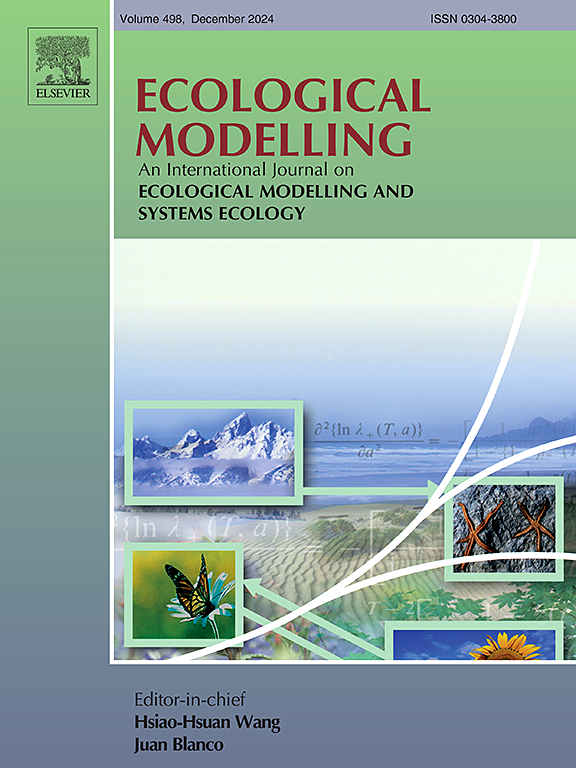Phenological analysis through biomathematical models of three varieties of pear (Pyrus communis L.) in mediterranean climate conditions
IF 2.6
3区 环境科学与生态学
Q2 ECOLOGY
引用次数: 0
Abstract
Climate change has induced significant alterations in the timing of phenological stages of fruit trees globally, underscoring the critical need for studies incorporating precise quantitative data into biomathematical models describing phenology. Despite numerous regional studies, the pear tree (Pyrus communis L.) has received scant attention in the southern hemisphere. This study focuses on establishing day intervals for key phenological stages - bud burst, flowering, and harvest - in pear varieties including Abate Fetel, Coscia, and Forelle. Monomolecular phenology models were developed for each cultivar, where the determination coefficient (r2) values ranging from 0.94 to 0.96. Additionally, the model validation was conducted to assess accuracy, revealing varying ranges of error metrics among cultivars. The average value of RMSE, MAE, and EF was 9.7, 7.0, and 0.80, respectively. Particularly, Rpo values were consistent, indicating favorable agreement between observed and simulated values. Furthermore, the t-test yielded a value of 1 across all cultivars, confirming model validity. Modeling the effect of climate change to simulate advancement in phenological stages presents a dynamic monomolecular model with lag effect, providing valuable insights to support agricultural management, including pest and disease management, fertilizer application, irrigation, and harvest planning, in response to evolving environmental conditions.
求助全文
约1分钟内获得全文
求助全文
来源期刊

Ecological Modelling
环境科学-生态学
CiteScore
5.60
自引率
6.50%
发文量
259
审稿时长
69 days
期刊介绍:
The journal is concerned with the use of mathematical models and systems analysis for the description of ecological processes and for the sustainable management of resources. Human activity and well-being are dependent on and integrated with the functioning of ecosystems and the services they provide. We aim to understand these basic ecosystem functions using mathematical and conceptual modelling, systems analysis, thermodynamics, computer simulations, and ecological theory. This leads to a preference for process-based models embedded in theory with explicit causative agents as opposed to strictly statistical or correlative descriptions. These modelling methods can be applied to a wide spectrum of issues ranging from basic ecology to human ecology to socio-ecological systems. The journal welcomes research articles, short communications, review articles, letters to the editor, book reviews, and other communications. The journal also supports the activities of the [International Society of Ecological Modelling (ISEM)](http://www.isemna.org/).
 求助内容:
求助内容: 应助结果提醒方式:
应助结果提醒方式:


